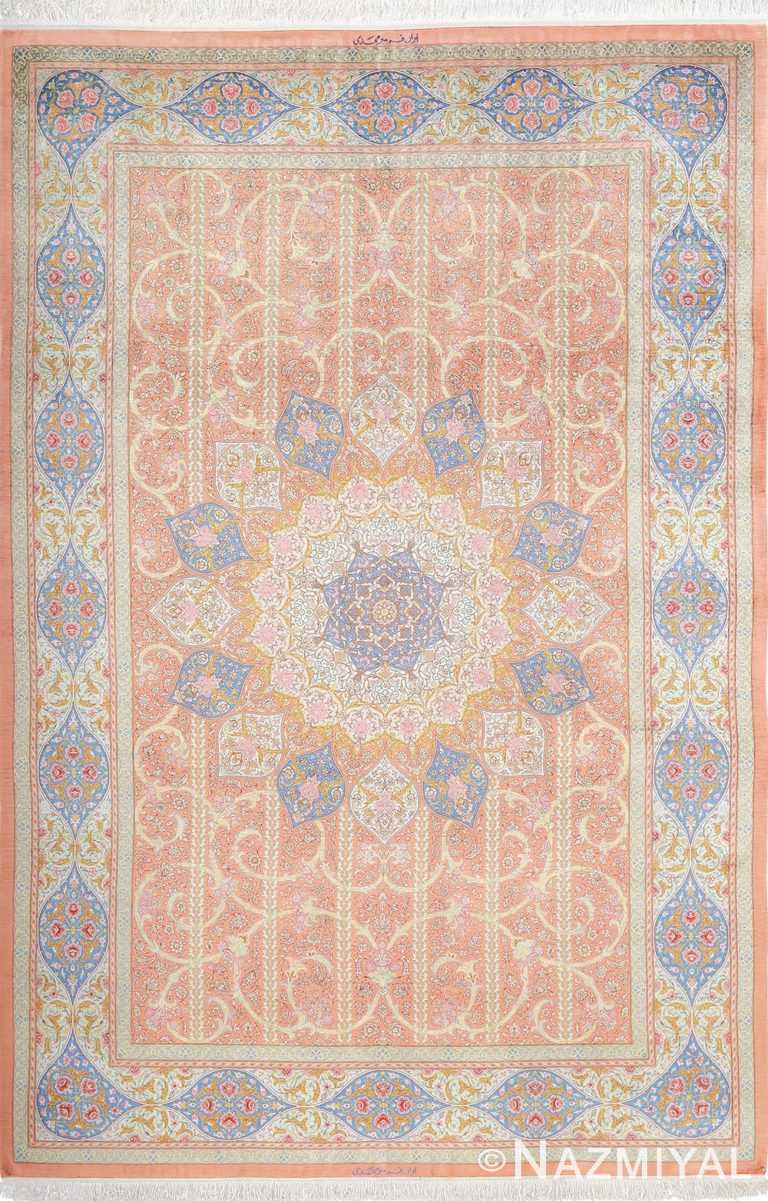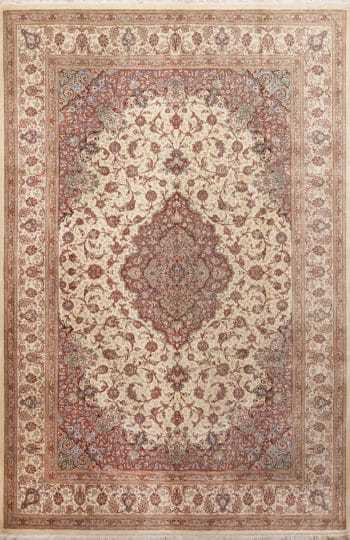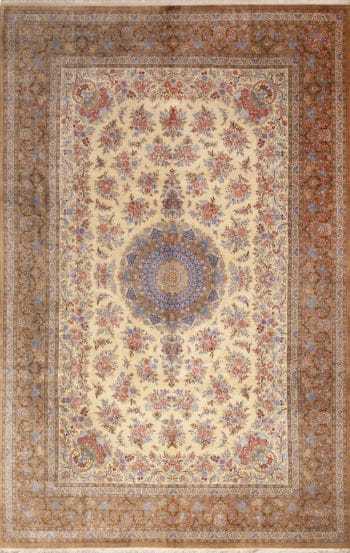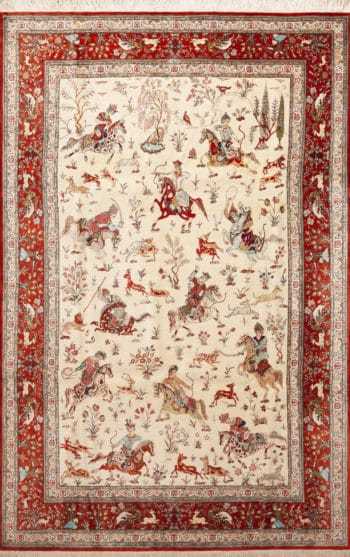Extremely Fine Weave Intricate Design Vintage Persian Silk Qum Rug 51043
Intricate and Extremely Fine Silk Vintage Qum Persian Rug, Knots Per Square Inch: 625, Country of Origin / Rug Type: Vintage Persian Rug, Circa Date: Late 20th Century – This fine vintage silk Persian rug is breathtaking in its form and presentation. The myriad of colors presented within stand against each other to create soft sections of contrast, but the entirety of the vintage Persian rug is unified through the foreground elements. Elegant pale yellows and beiges exquisitely weave through the borders and around the heart of the fine silk vintage Persian Qum rug, where all of the designs seem intertwined thanks to the lighter presence of the sunny tones. These hues manifest in the appearance of curling vines and twisting leaves, and their abundance results in an undeniably graceful appearance, as if the surface of this masterpiece of vintage rug weaving is held together by the elements on the foreground.
























